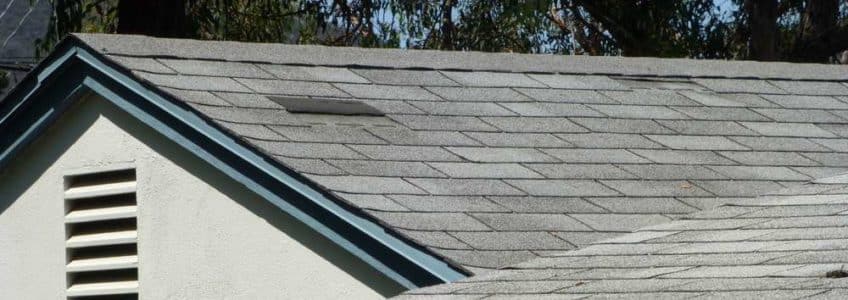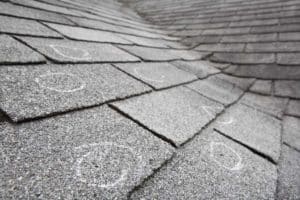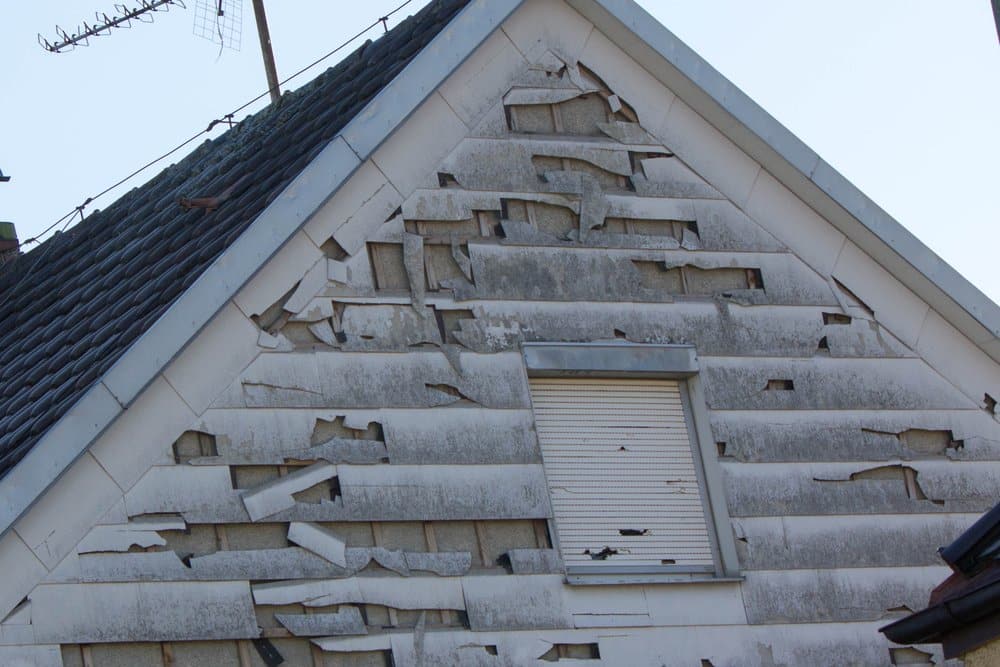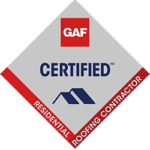
Several factors influence roof hail damage. What size hail will damage a roof, how much hail damage will require you to replace a roof, and what hail damage looks like on a roof are essential questions for fixing and preventing roof hail damage. Here is everything you need to know about hail damage to a roof.
How Does Hail Damage Your Roof?
Hail damages your roof when it impacts the roof with a high enough intensity to cause dents, scratches, punctures, and loose or missing shingles. The roof hail damage will also vary depending on your roof’s material. However, never overlook roof hail damage, no matter what material your home has.
Asphalt shingle roofs have the longest lifespan but are middle-of-the-road when it comes to preventing hail damage to a roof. Shingles can be pitted, dented, scratched, cracked, and knocked loose. Asphalt shingles are the most common roofing material.
Clay shingles or tiles can shatter due to roof hail damage, while metal roofing may only dent thanks to hail damage to a roof. Wooden roofs can take the most roof hail damage but can take the least amount of damage from other weather conditions.
What Does Hail Damage Look Like on a Roof?

If you’ve never experienced a hail storm, you may ask, what does hail damage look like on a roof? Hail damage to a roof can look like “bruises” on shingles or can misalign shingles and tear them off. The bruises appear as cracks, fractures, dents, and missing chunks. They can be hard to spot but hail damage to a roof can lead to more significant problems if not solved.
So, what does hail damage look like on a roof? Typically, it looks like one of the following three things.
Cracks and Dents in Roof Hail Damage
Cracks from roof hail damage can look like thin slivers within your shingles and can change the shape of the remaining material. In severe hailstorms, your shingles can break entirely off, resulting in exposed fiberglass mats.
Dents typically come from larger hailstones and are less likely to occur in shingles than in other materials like sheeting, brick, or wood because shingles are more flexible. However, hail may have dented gutters, air vents, or other metal structures.
Exposed or Fractured Fiberglass Mats
If hail cracks the shingles enough to loosen them, the fiberglass mat underneath can become exposed. It’s easy to tell what an exposed mat looks like, but it can be harder to see a fractured one (especially if the shingle is still in place) from roof hail damage.
Exposed mats can lead to water accumulation under the shingles and are the perfect place for ice to form and pop your shingles off, causing roof hail damage. Fractured mats can have water seep through them and into your house, causing water damage to the wooden frame and ceilings.
Cosmetic Hail Damages to Roof
When it comes to cosmetic damage, what does hail damage look like on a roof? Hail damage to a roof mostly results in cosmetic damage that can lead to more significant issues if left untreated. For example, a dent or crack in a shingle won’t immediately be the end of your entire roof. How much hail damage you need to replace a roof can depend on the seriousness of the cosmetic damage, which can lead to permanent damage.
For example, a few cracks won’t ruin the entire roof within a day. However, if you never repair the cracked shingle, water can get into the roof and freeze, causing further cracks under and between the shingles.
If you notice damage on other parts of your roof, it’s a good idea to call us for a free inspection. This way, professionals can look for damage you may have missed when looking over your roof for hail damage.
What Size Hail Will Damage a Roof?
No two storms have the same-sized hailstones, and the different sizes can result in additional roof damage. But what size hail will damage a roof? Typically, hailstones range from the size of a pea to the size of a softball. What size hail will damage your roof? Anything larger than a grape will cause hail damage to a roof.
Smaller hailstones don’t typically have a high enough density to cause visible roof hail damage- though they may be the end of your flowerbeds. Hail larger than an inch can gain enough momentum through a strong wind to begin chipping away at bricks and shingles, causing roof hail damage.
When the wind picks up during a hailstorm, it doesn’t matter what size the hail is to damage your roof. Hailstones around two to four inches can impact your roof anywhere between 44 to 72 mph. Imagine a softball-sized hailstone with a higher density hitting your roof at 60 mph; this will cause significant hail damage to a roof.
So, what size hail will damage a roof? Typically, anything larger than an inch.
How Much Hail Damage To Replace a Roof?
How much hail damage to replace a roof? That depends on whether you want insurance to pay for it. Insurance companies offer different levels of coverage depending on where you live and the price of your deductible. Up here in Minnesota, it’s definitely part of your coverage. But how much damage is enough to qualify? How much hail damage to replace a roof?
In terms of hail damage to a roof, most insurance companies want to see seven to ten hail impact points that caused visual damage within a 10’ by 10’ square. However, if your roof has three to four punctures due to hail damage, you’re most likely covered for at least a partial repair.
Some insurance companies won’t cover cosmetic damages, which is why that free inspection is crucial. Having a professional company state that there’s physical damage to your roof is the first step to replacing it.
A professional appraisal can prove the damage is from hail, not from other situations like UV rays, branches, animals, or improper installation. So, how much hail damage to replace a roof? Typically about seven to ten points of impact per every ten square feet.
Have Hail Damage? Get Your Free Estimate Today

Your roof is built to protect your house, but sometimes mother nature can be a bit too much and cause hail damage to a roof. When looking for hail damage to your roof, check for dents, cracks, and granule loss on your shingles. Checking the gutters and air vents for hail damage to a roof is good for diagnosing the hail’s size.
Roof hail damage can be both cosmetic and extreme, meaning you’ll need someone to analyze the full depth of damage to your roof. Contact A to Z Construction today, and we’ll come out and ensure your roof is in excellent condition. If it’s not, we’ll be happy to stay and finish the job.









